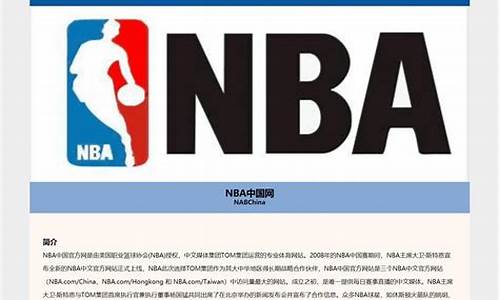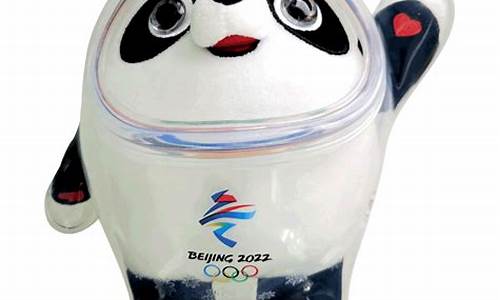1.奥运英语
2.奥运五环颜色分别代表什么?用英语说哦!
3.北京奥运会徽英语解释
4.奥运五环颜色分别代表什么?用英语说

奥运金牌在英语中通常被称为“Olympic gold medal”,其中“Olympic”表示奥运会,“gold”表示金牌,“medal”表示奖牌。下面将介绍这个词汇的具体用法和相关表达方式。
Olympic gold medal
“Olympic gold medal”是奥运会中获得的最高荣誉之一,通常是指在奥运会比赛中获得第一名的选手或团队所获得的金色奖牌。例如,“He won an Olympic gold medal in swimming”可以翻译为“他在游泳比赛中获得了一枚奥运金牌”。
Gold medalist
“Gold medalist”是指在比赛中获得金牌的选手或团队,其中“medalist”表示获奖者。例如,“She is a gold medalist in gymnastics”可以翻译为“她是一名体操的金牌获得者”。
Champion
“Champion”是指在比赛中获得第一名的选手或团队,通常也用于表示获得了冠军头衔的人。例如,“He is the Olympic champion in weightlifting”可以翻译为“他是举重比赛的奥运冠军”。
Winner
“Winner”是指在比赛中获胜的选手或团队,可以用于表示获得任何奖牌的人。例如,“She is a winner of three Olympic gold medals”可以翻译为“她获得了三枚奥运金牌”。
除了上述词汇,还有一些其他的表达方式可以用来描述奥运金牌,例如:
First place: 意为“第一名”,可以用于描述在比赛中获得第一名的选手或团队。例如,“He finished in first place and won the gold medal”可以翻译为“他获得了第一名并赢得了金牌”。
Top prize: 意为“最高奖项”,用于描述获得奥运会金牌的选手或团队。例如,“The top prize in the 100m race is the Olympic gold medal”可以翻译为“100米赛跑的最高奖项是奥运金牌”。
综上所述,“Olympic gold medal”是奥运会中获得的最高荣誉之一,通常用于描述在奥运会比赛中获得第一名的选手或团队所获得的金色奖牌。
奥运英语
火炬:torch
福娃:friendlies
志愿者:volunteer
鸟巢:bird's nest
水立方:water cube
winner 优胜者
record holder 纪录保持者
cut the record 打破纪录
record breaker 打破创造者
set a new record 创造新纪录
world record 世界纪录
champion 冠军
runner-up/the 2nd place 亚军
third place/the 3rd place 季军
medalist 奖牌获得者
gold medalist 金牌获得者
silver medalist 银牌获得者
bronze medalist 铜牌获得者
last eight 取得决赛权的八名选手
final result 决赛成绩
total points 总分
placement/ranking 名次,排名
final placing 决赛名次
medal tally 奖牌榜
lost to 败给
defeat 击败
win title 夺魁
go for gold 夺取金牌
defend title 卫冕
road to 进军
victory and ceremony/awarding ceremony 颁奖仪式
The victory ceremony for … will now take place 颁奖仪式现在开始
announce results 公布成绩
The medals will be presented in descending order-1st, 2nd, 3rd. 按第一名、第二名、第三名顺序颁发奖牌。
raise national flag and play national anthem 升国旗,奏国歌
mount the rostrum 登上颁奖台
sportsmanship trophy 风格奖
fair play trophy 公平竞赛奖
cup/trophy 奖杯
prize money 奖金
prize/trophy/award 奖品
awarding/ to present prize 颁发奖品
title 称号
undertake laps of honor 绕场一周向观众致意
国际奥委会 the International Olympic Committee (IOC)
申办城市 the bidding cities
候选城市 the candidate cities
申办2008年奥运会 bid for 2008 Olympics
主办2008年奥运会 host the 2008 Olympic Games
奥林匹克精神 the Olympic ideals; the Olympic spirit
世界奥林匹克日 the International Olympic Day
环境保护 protect the environment
北京四环路 the fourth ring road in Beijing
城市基础设施建设 the city's infrastructure construction
最后的投票 make the final vote
绿色奥运 the Green Olympics
科技奥运 the Scientific Games
奥运五环颜色分别代表什么?用英语说哦!
What do the Olympic rings mean?
The colours of the interlinked Olympic rings were chosen by the International Olympic Committee (IOC) , to represent the union of the 5 continents , Australia , Africa , America , Asia and Europe and further signify the meeting of the worlds athletes at the Olympic Games.
The plain white background of the Olympic flag is symbolic of peace throughout the games .
The five colours of the rings from left to right are blue, black and red across the top with yellow and green along the bottom , these colours may be found on most flags of the world and officially hold no other particular significance , although some believe each colour represents a particular continent.
Blue =Europe
Yellow =Asia
Black =Africa
Green =Australia
Red =America
The Olympic rings are the official trademark of the I.O.C.
奥运五环代表什么?
国际奥委会选择五个相连的圆环作为其标志,并选择了相应的色彩。五个圆环代表五大洲:大洋洲、非洲、美洲、亚洲和欧洲。更深一层的意思是代表着全世界的运动员都聚集在奥林匹克运动会上。
朴素的白色背景寓意着和平。
五种颜色从左到右分别是:上方三个蓝、黑、红,下方黄和绿。这五种颜色都为各国国旗上的常见颜色,而且没有被赋予特殊含义。但是也有人认为,这五种颜色分别代表着五大洲。
蓝 =欧洲
黄 =亚洲
黑 =非洲
绿 =大洋州
希望可以帮到你!!!
北京奥运会徽英语解释
Colourful Olympic Games five rings signs , the continent representing five respectively,\x0d\blue is Europe , \x0d\black is Africa , \x0d\red is America , \x0d\the yellow is Asia , \x0d\green is Australia.
奥运五环颜色分别代表什么?用英语说
会 徽 说 明
申办会徽由奥运五环色构成,形似中国传统民间工艺品的“中国结”,又似一个打太极拳的人形。图案如行云流水,和谐生动,充满运动感,象征世界人民团结、协作、交流、发展,携手共创新世纪;表达奥林匹克更快、更高、更强的体育精神。
Emblem
The emblem resembles a person doing "taiji" (Tai Ch'I), symbolizing gracefulness, harmony, vitality and mobility as well as unity, cooperation, exchange and development. It also resembles the shape of a traditional Chinese artifact known as the "China Heart Unit." The logo was designed by Chen Shaohua, a noted designer in Shenzhen and one of the 13 official emblem designers ointed by ICO, and well-known painter Han Meilin, who modified the design by using a calligraphy brush. Kan Tai-Keung, a famous designer in Hong Kong, also contributed to the designing of the emblem.
口 号 说 明
有三千余年建城史的北京,经过改革开放的洗礼,将以崭新的、多姿多彩的面貌进入新世纪,她将以饱满的热情欢迎全世界的体育健儿和各界朋友,共同参与奥运盛会。 历经百年沧桑的现代奥林匹克运动会,在拥有世界人口1/5的中国举办,将使奥林匹克精神得到更广泛的传播,翻开奥林匹克运动的崭新一页。同时,进入新世纪的奥林匹克运动也将以全新的面貌向世界人民展示其特有的魅力。
Motto
New Beijing, Great Olympics
Reform and opening up to the outside world he brought about great changes in Beijing, a city with a 3,000-year history. The city has taken on a completely new look as it enters the new century. It will embrace the athletes and friends from the rest of the world attending the Olympic Games with great enthusiasm.
The great modern Olympic Movement has gone through many changes in the past 100 years. Should the Olympic Games be held in China, the most populous nation in the world, the Olympic spirit will be even further disseminated and a new page will be turned in the Olympic history; and the Olympic Movement will show its unique splendor to the world in the new millennium.
The colours of the interlinked Olympic rings were chosen by the International Olympic Committee (IOC) , to represent the union of the 5 continents , Australia , Africa , America , Asia and Europe and further signify the meeting of the worlds athletes at the Olympic Games.
The plain white background of the Olympic flag is symbolic of peace throughout the games .
The five colours of the rings from left to right are blue, black and red across the top with yellow and green along the bottom , these colours may be found on most flags of the world and officially hold no other particular significance , although some believe each colour represents a particular continent.
According to most accounts, the rings were adopted by Baron Pierre de Coubertin (founder of the modern Olympic Movement) in 1913 after he saw a similar design on an artifact from ancient Greece. The five rings represent the five major regions of the world: Africa, the Americas, Asia, Europe, and Oceania. Every national flag in the world includes at least one of the five colors, which are (from left to right) blue, yellow, black, green, and red. It is important to emphasize that Pierre de Coubertin never said nor wrote that the colors of the rings were linked with the different continents
The Olympic Flag made its debut at the 1920 Olympic Games in Antwerp, Belgium. At the end of each Olympic Games, the mayor of that host-city presents the flag to the mayor of the next host-city. It then rests at the town hall of the next host-city for four years until the Opening Ceremony of their Olympic Games.








